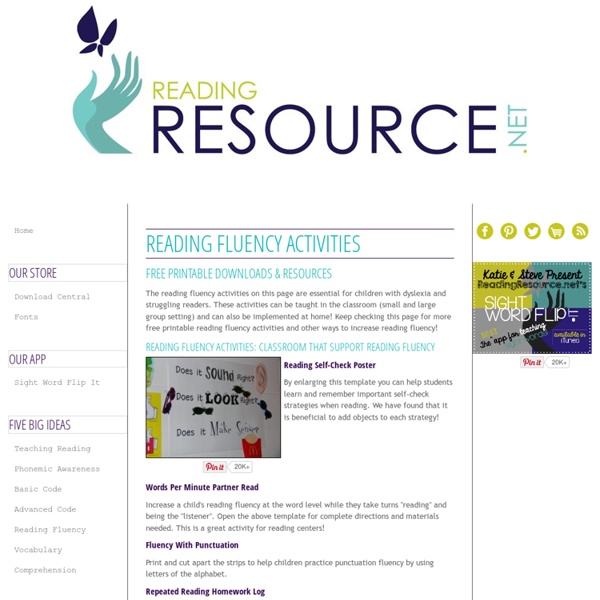SuperSpeed: Game of Champ Readers!
Improving student reading speed, of all serious educational problems, is one of the easiest to solve. Only 100 words, sight words, make up over 50% of the words students will ever read. Many of these words cannot be sounded out phonetically and thus must be known at sight, instantly. The more quickly students can read sight words, the faster they will read. Superspeed reading games developed by Whole Brain Teachers of America and classroom tested by hundreds of educators, provide a simple, extremely entertaining way to help K-12 students improve their reading speed.
Fluency: Instructional Guidelines and Student Activities
Guidelines for instruction Provide children with opportunities to read and reread a range of stories and informational texts by reading on their own, partner reading, or choral reading.Introduce new or difficult words to children, and provide practice reading these words before they read on their own.Include opportunities for children to hear a range of texts read fluently and with expression.Suggest ideas for building home-school connections that encourage families to become involved actively in children's reading development.Encourage periodic timing of children's oral reading and recording of information about individual children's reading rate and accuracy.Model fluent reading, then have students reread the text on their own. What students should read Fluency develops as a result of many opportunities to practice reading with a high degree of success. A text is at students' independent reading level if they can read it with about 95% accuracy.
Read Out Loud
When he first started putting letters together into words, your child spent lots of time learning to "decode"--make sense of--text on the page. Now that second grade is here, he'll be working on a new phrase, "fluency,"--the ability to read smoothly and at a pace that promotes understanding of what is being read. Fluency, along with comprehension, is the ultimate goal for readers of all ages, but can be especially difficult to achieve at first when a young learner is just beginning to read. To help your child develop fluency, provide him with repeated opportunities to listen to good reading, and to listen to himself reading, too. In this way, he’ll develop a good sense of what fluency sounds like, and model his own reading in the same manner.
Free Reading Worksheets
Vocabulary Activities
Skits This is a good culminating activity, before a test, to bring together all the grammar, vocabulary, and cultural concepts in a lesson. Goal: To create and present a cohesive skit on a particular topic. Preparation: Create a rubric and a clear set of directions for the students.
Reading. Writing. Thinking. Sharing.
Break up the mid-winter slump, and bring Fluency Boot Camp into your classroom! What is a Fluency Boot Camp? No… you will not be shipping your students off (sorry), nor will students have to march around the room (your choice), but I can guarantee that your students’ brains will be sweating as they participate in the classroom fluency camp you create!
Improving Fluency in Young Readers
What is fluency? According the National Reading Panel (2000), fluency is the ability to read text with speed, accuracy and proper expression. Fluent readers:




These activities are fun and creative for both the students and the teachers. I could see some of them becoming routine in the classroom by mandomtz Nov 8
This website offers many online activities and free print out activities for fluency. The website offers the activities in many levels with a great selection for different learning styles. by vortiz3 Nov 4
This site offers fluency activities and free printable resources and downloads. by britto Jul 23
This site provides several classroom fluency activities and can be used with students at different levels. Great for modified instruction. by jkor Jul 14
This website offers many strategies and activities to differentiate instruction to reach readers at many different levels. A great selection of activities to choose from. by vickiekwiecinski Jul 2
This page has a number of activities that can be used to increase fluency. Many of the activites listed would be considered differentiated teaching and would greatly improve a student's interest. by kbeck07 Nov 4